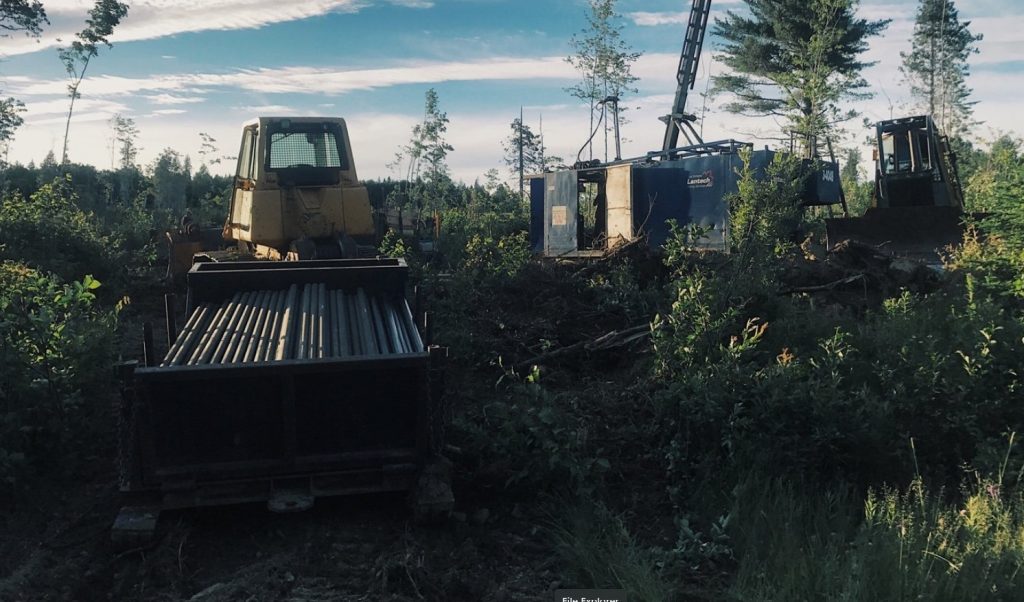Callinex Mines begins 2024 exploration campaign at Pine Bay Project, Manitoba

Callinex Mines Inc. [TSXV-CNX; OTCQX-CLLXF] reported that it has commenced the fully funded 2024 exploration campaign at the 100%-owned Pine Bay Project located within the Flin Flon Mining District of Manitoba. The recently consolidated Project area encompasses 11,859 hectares (approximately 120 km2) and benefits from a mineral lease, water, hydroelectric power, historic shaft and direct road access to an idle processing facility in Flin Flon, located 16km away.
The 5,000-metre drilling campaign has begun with testing of target area Poseidon with plans for a step-out drill hole to be completed on the Descendent discovery. While any necessary borehole electromagnetic surveys are completed at Poseidon and Descendent the campaign will move on to Odin and Ra, two previously announced target areas.
Max Porterfield, President and CEO, stated, “We are excited to follow-up on our recent Descendent discovery and the target areas that our team has outlined. “Porterfield continued, “Each target area being drill tested has the potential to significantly expand upon the high-grade copper resource that’s defined at the Pine Bay Project.”
Drilling has commenced on a 500m drill hole to test target area Posiedon, which is located 1,300 metres along strike to the north of the Rainbow deposit. This area was covered by the recent MT survey on the Descendent line. The MT survey data outlined a very large resistivity low anomaly interpreted to be mapping the alteration package between the known Rainbow and Pine Bay horizons.
Poseidon has the potential to host a discovery that comes close to the surface like the Rainbow deposit along strike to the south. A surface pulse electromagnetic survey (SPEM) and airborne electromagnetic survey (VTEM) previously completed each have confirmed a highly conductive body near the surface that sits along the interpreted Rainbow horizon and on the edge of the MT resistivity anomaly.
Callinex has only tested this area with a single drill hole and there have only been a few very shallow historic holes in the immediate vicinity.
Geology in the very limited drilling nearby has intersected favorable package of very strong black chlorite-rich footwall alteration with several key VMS signature elements, such as very strong Europium values, sitting within the same ‘Rainbow’ volcanic package that is dominated by felsic flows/hyaloclastites that are immediately overlain by cherty felsic tuffs.
BHPEM results from the single near surface hole drilled by the Company in 2016, PBM-013, revealed a strong in-hole/off-hole anomaly associated with 8 metres of mineralization intersected in the hole. Additionally, PBM-024-DPN intersected the Rainbow horizon at depth and is accompanied by a very strong BPEM off-hole anomaly that corresponds with the horizon as well as the BPEM anomaly identified closer to surface in PBM-013.
Once target area Poseidon is tested the drill will be mobilized to follow-up on the Descendent discovery with a 350m step-out vertically below and to the north of discovery hole DSC-111. The most significant section returned from Descendent discovery drill hole DSC-111 returned 7.14 metres grading 1.70% copper equivalent (CuEq) with additional intersections including 10.57 metres grading 1.36% CuEq.
The grades intersected to date at the Descendent are comparable to grades intersected at the top of the nearby Rainbow deposit. At Rainbow, the average drill hole composite grades are 1.55% CuEq (0.56% Cu, 0.46 g/t Au, 1.63% Zn and 9.27 g/t Ag) within the first 200m (-100m to -300m elevation) of the deposit.
The base and precious metal bearing massive sulphide intersections into Descendent are associated with a major alteration zone that’s previously been identified at surface and spans 1,100m by 700m as supported by lithogeochemical data.
The resistivity low anomaly associated with the Descendent VMS system remains open at depth, as supported by other geological, geophysical and geochemical data.
Additionally, MT survey results at depth further support the company’s exploration thesis that the Descendent could potentially sit at the nose of the fold where the horizon that hosts the Descendent deposit meets the horizon that hosts the Pine Bay deposit, located further to the south. Deposits that sit at the nose of a fold can host significantly wider lenses of mineralization and with it the potential to add significant tonnage with minimal drillholes.
The company granted 800,000 stock options to directors, officers, employees and consultants. The options are exercisable at $1.25 per share, subject to certain vesting requirements and expire five years from the date of the grant.
Callinex prepared an indicated mineral resource on the Rainbow deposit of 3.44 Mt grading 3.59% CuEq for 272.4 Mlb CuEq (238.3 Mlb Cu, 56.9 Mlb Zn, 37.6 koz Au, 692.8 koz Ag, 2.3 Mlb Pb), an inferred mineral resource on the Rainbow deposit of 1.28 Mt grading 2.95% CuEq containing 83.4 Mlb CuEq (72.1 Mlb Cu, 19.5 Mlb Zn, 11.1 koz Au, 222.2 Koz Ag, 0.8 Mlb Pb) and an inferred mineral resource at the Pine Bay deposit of 1.0 Mt grading 2.62% Cu containing 58.1 Mlb Cu.
